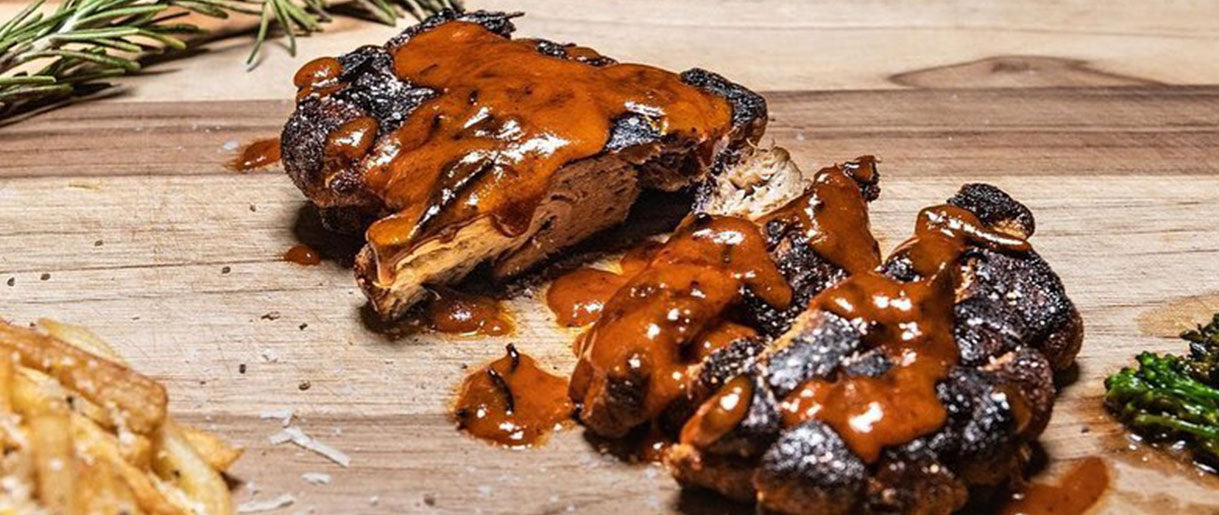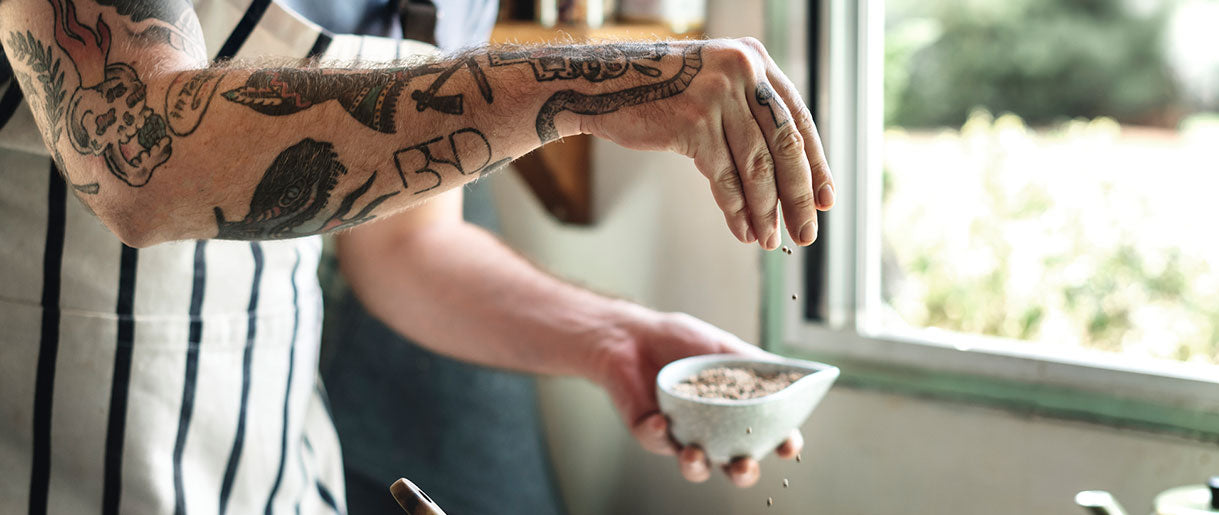Some people consider mushrooms to be a luxury. However, for those who want intense and rich flavors that add something special to a meal, their earthiness and meaty textures make them a go-to kitchen staple.
But for certain people, mushrooms are off-limits. If you fall into the latter category, it might just be that you haven't discovered a mushroom kind you genuinely enjoy.
We consume a significant portion of the same species of mushrooms. And we can understand why you wouldn't like them if you've only ever eaten these mushrooms. However, there are a vast variety of mushrooms to pick from, and they all have distinctive flavors and textures.
That's why we've chosen to compile a few of our favorite but different types of mushroom for cooking. Of course, we'll cover the traditional varieties, but we also want to acknowledge and celebrate some lesser-known mushroom species.
Mushroom Varieties Using in Cooking and Their Features
Mushrooms(1) are a common ingredient in many of your favorite cuisines. And the days when the lone button mushroom was the only variety of mushrooms sold in supermarkets are long gone. Continue reading below for a quick overview of popular types of cooking mushrooms and tips on using them in your dishes.
Everyone Favorite White Button

We're going to presume that if you've only ever eaten one kind of mushroom, it was a button mushroom. This type of mushroom is highly popular and is probably what you see every time you visit the produce aisle at your local supermarket.
Button mushrooms are members of the same species as cremini and portobello mushrooms; they are simply plucked earlier in the growth cycle. The result is a subtle, often unremarkable flavor.
They can be added uncooked to a salad, and a plain plate of lettuce would taste unique with their slightly chewy and tough texture. They are better for sauces or even as a side dish when sautéed or grilled because the flavor becomes stronger and more profound. If you don't want your button mushrooms to taste dull, we advise you to season them liberally with herbs and spices.
Versatile Cremini

The middle child, cremini (sometimes spelled cremini ) mushrooms, are smaller and younger than portobellos but firmer, darker, and more mature than white button mushrooms. They are meatier and tastier than their younger counterparts because they have had more time to mature.
Cremini mushrooms may be used in most recipes that call for mushrooms because they are so versatile. For example, if you prefer eating things raw, you can put them in a salad, but sautéing, roasting, or grilling them gives them a completely different flavor. And if you're seeking the ideal mushroom for a rich, flavorful risotto, then cremini might be just what you need.
Rich Portobellos

Portobello mushrooms are so much larger (imagine the size of your palm) than their cousin because they are simply harvested later than the button and cremini varieties. As a result, they have the strongest and most intense flavor of the three types since they have grown the longest. But since portobellos are so frequently used in food, most people shouldn't find their flavor all that disagreeable. Additionally, portobellos must be among your favorites if you typically enjoy the richness and umami flavors of mushrooms.
They make an excellent vegetarian meat substitute since they are dense and can withstand a range of cooking techniques (broiling and roasting). Frequently used in Italian cuisine, deep, rich portobellos give sauces and pasta depth and can be grilled or stuffed.
Meaty Shiitake

Shiitake, which translates from the Japanese as "chinquapin mushroom," refers to where these mushrooms grow naturally in the wild—on the rotting wood of chinquapin trees. Most shiitakes are now grown rather than foraged, though. As a result, they are most easily recognized by But are you wondering if they’re one of the best types of mushrooms for cooking?
They're not particularly strong, making them excellent for beginners, but they have a more robust flavor than button mushrooms. When consumed raw, shiitake mushrooms have an earthy, woodsy flavor, but when cooked, they develop a deep umami flavor that is delicious in many different cuisines.
Shiitake mushrooms are frequently sautéed but taste nice when fried or roasted. You may also easily add them to soups.
Delicate Oyster

Oyster mushrooms are fan-shaped, whitish, and have a delicate flavor and perfume, just like their namesake bivalves. Although they can be found in the wild growing on tree trunks, the mushrooms in shops or on menus are almost certainly grown in a controlled environment.
Oyster mushrooms have a pale hue, a very soft and chewy texture, and a mild, almost sweet flavor. Oyster mushrooms have a meaty texture after being cooked. Use oyster mushrooms in stir-fries, sauces, and soups.
Woodsy Chanterelle

You can't go wrong with chanterelles if you want a mushroom that will be a show-stopper before you even take a mouthful. These mushrooms have a stunning yellow-orange color that is so vivid that you might assume they were toxic if you didn't know any better.
They could cost more because they're not the most widely available mushrooms, but if you can afford them, we promise they're worth the extra money.
A strong woodsy flavor is one of the first things you'll taste when you bite into a chanterelle. It might not be your cup of tea if you don't eat a lot of mushrooms, but it's likely to be a hit for those who do.
Simply sautéing some chanterelles in butter will make a delicious side dish because they are so flavorful. Just be sure to give them the attention they deserve if you use them in another recipe. This gorgeous fungus shouldn't be kept hidden.
Marvellous Lion’s mane

Although you may not think of Lion's mane when you talk about mushrooms for cooking, you'll be amazed when you try one. Despite not looking edible, you can absolutely eat this strange-looking fungus. The good news is it has a delicate flavor that is almost seafood-like.
The fungus is very meaty inside, making it an excellent meat substitute. The tiny white strands can be sautéed and become lovely and crispy as long as they are white.
Lion's mane should be chopped, quickly sautéed in butter, and added to shrimp bisque. You can also tear the huge mushroom apart into "shreds" to make a mushroom cake (similar to a crab cake or salmon patty).
Interesting Read: Use these Lion's Mane mushroom recipes to prepare a healthy and tasty meal.
Earthy Maitake

Last (and the best) on our list of favorite mushroom types cooking is Maitake, or hen of the woods. This edible mushroom is another "cluster" variety resembling a cabbage head.
The ideal way to prepare this earthy, peppery mushroom is to sauté it with savory and salty ingredients. Delicious in sauces, sauté, ramen, soups, stews, and pasta dishes. Additionally, it is available in a nutritional form for use in normal health regimens.
FAQs About Types Of Mushroom For Cooking
Which Mushroom Is Healthiest?
Reishi, Turkey tail, Chaga, Lion's mane, Cordyceps, and Maitake are the healthiest mushrooms(2) around. They contain anti-oxidants, anti-inflammatory compounds and pack a serious nutritional punch.
Which Mushroom Is More Tasty?
Maitake mushroom is the most flavorful mushroom, period. It's incredibly adaptable and tastes just as fantastic on pizza.
Which Mushroom Is Best For Pasta?
The best types of mushrooms for pasta include oyster, chanterelle, shiitake, portobello, and cremini. Each variety of mushrooms goes best with different types of noodles. You can change the pasta dish's texture and flavor profile by selecting fresh or dried mushrooms.
Key Takeaways
It's so simple to enjoy the great flavors and flexibility of mushrooms because there are so many types of mushroom for cooking readily available at grocery stores and farmers' markets. The endless possibilities and recipes range from earthy shiitakes and hearty cremini to adaptable white buttons.
References
- Edible Mushrooms: Improving Human Health and Promoting Quality Life, (1)https://www.ncbi.nlm.nih.gov/pmc/articles/PMC4320875/
- Medicinal Mushrooms: Bioactive Compounds, Use, and Clinical Trials, (2)https://www.ncbi.nlm.nih.gov/pmc/articles/PMC7826851/









Let Us Know Your Comments